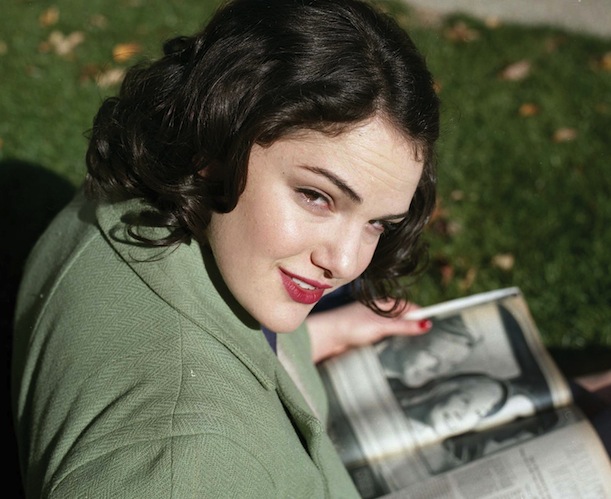Film Review: “Teenage” — What it Was Like to be Young and Restless in the 20th Century
Like the Jon Savage book it is based on, “Teenage” avoids gooey nostalgia; the documentary’s enjoyable to watch, and refreshingly not tongue-in-cheek. There’s a toughness at its core that gives it great value.
Boston Area Film Schedules – What is playing today, Where and When
Teenage, directed by Matt Wolf. Playing at the Kendall Square Cinema.
By Betsy Sherman
Jon Savage’s 2007 book Teenage: The Creation of Youth Culture 1875-1945 was revelatory social history. It focused on the experiences of, and the impact on society of, the portion of the population in between childhood and adulthood, for which there was not yet a name. With an appreciation of pop culture but little regard for its easy clichés, Savage wrote about the way in which real lives were being lived by youth in the U.S. and across Europe. What a treat that the book now has kinetic illustration in Matt Wolf’s documentary Teenage. Like its namesake, the movie avoids gooey nostalgia; it’s enjoyable to watch, and refreshingly not tongue-in-cheek. There’s a toughness at its core that gives it great value.
In the interest of using archival film footage as a driver, the filmmakers (Savage co-wrote the film with director Wolf) push the history’s starting date up to 1904, when an outcry against child labor resulted in laws being passed to outlaw the practice. It ends with the 1945 publication in the New York Times of “A ‘Teen-Age Bill of Rights.” There isn’t an all-knowing narrator here. Four performers give a view from the inside, speaking narration drawn from diaries and quotations by teens from the first half of the 20th century in the U.S., Great Britain and Germany. Film and audio clips, photographs, headlines and print advertisements serve two purposes, to form a big-picture timeline of two world wars, volatile political developments and economic boom and bust and to simultaneously pin to this timeline a variety of ephemeral youth trends and movements. Along with sources from the media establishment (newsreels, educational films and, sparingly, fiction films), there is amateur film footage. Since the era covered isn’t one of ubiquitous recording devices, there are also a few dramatic recreations.
Teenage is effective in conveying the push and pull between youth and adult authorities during this forty-year span. Some sort of rebellion springs forth organically, spurring creativity in, for example, fashion, music, and dance. It’s met with suspicion, perhaps fear, among the powers that be, and exploited by the media. A lid is clamped on. Youthful ideals are channeled into various political movements, and young men become fodder for war. In the wake of war comes disillusionment and an urge to live for the moment.
The span in between the devastation of the world wars was prime time for the in-betweenies: if you think America’s hedonistic flappers and pseudo-Valentino sheiks were shocking, get a load of England’s daringly flamboyant, androgynous Bright Young Things. Concurrently, an alternative view to the Cabaret version of Weimar Germany was being lived out by the outdoorsy youth movement known as Wandervogel (someone did have a camera going during one of their nudist seaside romps).
As a whole, the film is interested in groups of teens at the vanguard who react to their circumstances with action: we watch as they ride the rails in search of a better life during the Depression, or dance en masse at the 1939 World’s Fair (the jitterbug movement was unusual in its racial integration). But there are some individuals singled out. In Germany, it’s Melita Maschmann, an eager recruit into Hitler Youth who eventually realized its cruel master plan, and Tommie Scheel of the persecuted Swing Kids, who, intoxicated by the freedom of jazz, resisted regimentation. The words of African-American teen Warren Wall give a critical perspective on the difficult home front to which black GIs returned (“In Europe, they were treating us like equals,” he says).
An important member of the Teenage team is archivist Rosemary Rotondi, who pulled together rare materials that include color home movie footage shot by the Swing Kids. The recreations shot to supplement the vintage footage are convincingly designed, and they blend in fairly well with the vintage material—which, to me, is a problem. In this case, recreations should have been immediately identified as such, so that the actual rare material can be appreciated for its veracity.
Teenage is enticing, no matter when you were a teenager. Or if you still are one.
Betsy Sherman has written about movies, old and new, for The Boston Globe, The Boston Phoenix, and The Improper Bostonian, among others. She holds a degree in Archives Management from Simmons Graduate School of Library and Information Science. When she grows up, she wants to be Barbara Stanwyck.

